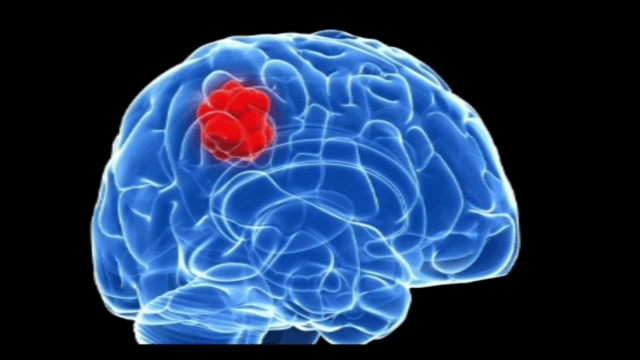



Business Inquiry
Global:
Email:marketing@medicilon.com
+1(781)535-1428(U.S.)
0044 7790 816 954 (Europe)
China:
Email: marketing@medicilon.com.cn
Tel: +86 (21) 5859-1500



It sounds counterintuitive: Lose the function of one tumor suppressor gene or another, and the result is faster tumor growth. But lose the function of both tumor suppressor genes, and the result is slower tumor growth. Yet such a counterintuitive effect has been observed by scientists at the Ludwig Institute for Cancer Research.
They report that the tumor suppressor genes PTEN (phosphatase and tensin homolog) and DAXX (death domain associated protein), along with the H3.3 histone protein, participate in interactions that may epigenetically enhance or inhibit tumor growth. Altogether, the interactions constitute an example of a phenomenon called a synthetic growth defect.
Medicilon boasts nearly 300 tumor evaluation models. At the same time, we are empowering innovative therapies to comprehensively evaluate and study immuno-oncology. We have completed model establishment and efficacy evaluation of immuno-therapies such as CAR-T, TCR-T, CAR-NK, oncolytic virus, antibody (monoclonal antibody, double antibody, polyclonal antibody, etc.), siRNA, AAV.
Tumor Animal Model Medicilon Has Established:

“It was an unexpected result because these are two verified tumor suppressor genes,” said Frank Furnari, Ph.D., a member of Ludwig Institute for Cancer Research and the senior author of a new paper about the newly discovered PTEN–DAXX interaction. This paper (“PTEN Regulates Glioblastoma Oncogenesis through Chromatin-Associated Complexes of DAXX and Histone H3.3”) appeared May 12 in the journal Nature Communications.
The loss of the tumor suppressor gene PTEN has been linked to tumor growth and chemotherapy resistance in the almost invariably lethal brain cancer glioblastoma multiforme (GBM). Now, Ludwig researchers have shown that one way to override the growth-promoting effects of PTEN deletion is, surprisingly, to inhibit DAXX, a separate tumor suppressor gene.
The finding could lead to new therapies for treating a common subtype of GBM and possibly other forms of cancer.
“PTEN is one of the most frequently deleted tumor suppressor genes in cancer,” noted Dr. Furnari. “If we can take our finding to the next level and develop a therapeutic around it, it could have wide utility.”
In the current study, Furnari and his colleagues detail a previously unknown physical interaction between PTEN and DAXX. The latter is a so-called chaperone protein that helps guide the attachment of the protein H3.3 to compact looping fibers of DNA and its protein scaffolding, which are collectively called chromatin.
H3.3 is a variant of the histone protein H3. Most histone proteins are involved in helping package DNA into structures small enough to fit in the cell nucleus, but H3.3 appears to play a gene regulatory role instead. H3.3 has been found attached to chromatin sections containing tumor growth-promoting genes, or oncogenes, suggesting it helps suppress their activity.
“We report a novel chromatin-associated function of PTEN in complex with the histone chaperone DAXX and the histone variant H3.3,” wrote the authors of the Nature Communications paper. “We show that PTEN interacts with DAXX and, in turn PTEN directly regulates oncogene expression by modulating DAXX-H3.3 association on the chromatin, independently of PTEN enzymatic activity.”
“Furthermore, DAXX inhibition specifically suppresses tumor growth and improves the survival of orthotopically engrafted mice implanted with human PTEN-deficient glioma samples, associated with global H3.3 genomic distribution changes leading to upregulation of tumour suppressor genes and downregulation of oncogenes,” the authors continued. “Moreover, DAXX expression anti-correlates with PTEN expression in GBM patient samples.”
Essentially, in the presence of PTEN, oncogene transcription is repressed by a PTEN–DAXX–H3.3 chromatin complex in association with other chromatin proteins. Upon loss of PTEN, however, oncogene transcription is activated. Yet DAXX inhibition in the context of PTEN deficiency restores H3.3 on chromatin and hence represses oncogene transcription.
Thus, the discovery that PTEN interacts with DAXX indicates it can regulate oncogene expression in cells by affecting H3.3–chromatin binding. The work by the Ludwig scientists supports this hypothesis. “What we found was that PTEN suppresses oncogene expression by increasing the deposition of DAXX and H3.3 onto chromatin,” explained Dr. Furnari.
“We are proposing that in the absence of PTEN, DAXX competes with chromatin for H3.3, enabling the expression of oncogenes that would otherwise be suppressed,” said study first author Jorge Benitez, Ph.D., a senior postdoc in Dr. Furnari’s lab. “But if both PTEN and DAXX are deleted, then H3.3 is once again free to bind to the chromatin, slowing tumor growth.”
In their animal experiments, the team used genetic engineering techniques to knock out the DAXX gene, but they want to develop a drug that can achieve the same result. To that end, they are working to identify how exactly DAXX and H3.3 bind to one another.
“The next step is to design molecules that can break that complex apart by binding to DAXX,” Dr. Benitez declared. “We think that is the first step on the way toward a therapeutic.”
 Relevant
news
Relevant
news